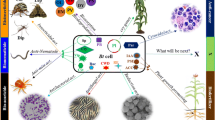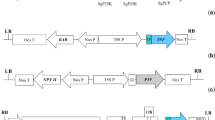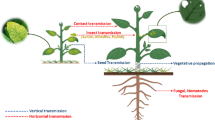Abstract
Transgenic plants have been used as a safe and economic expression system for the production of edible vaccines. A synthetic cholera toxin B subunit gene (CTB) was fused with a synthetic neutralizing epitope gene of the porcine epidemic diarrhea virus (sCTB–sCOE), and the sCTB–sCOE fusion gene was introduced into a plant expression vector under the control of the ubiquitin promoter. This plant expression vector was transformed into lettuce (Lactuca sativa L.) using the Agrobacterium-mediated transformation method. Stable integration and transcriptional expression of the sCTB–sCOE fusion gene was confirmed using genomic DNA PCR analysis and northern blot analysis, respectively. The results of western blot analysis with anti-cholera toxin and anti-COE antibody showed the synthesis and assembly of CTB–COE fusion protein into oligomeric structures with pentameric sizing. The biological activity of CTB–COE fusion protein to its receptor, GM1-ganglioside, in transgenic plants was confirmed via GM1-ELISA with anti-cholera toxin and anti-COE antibody. Based on GM1-ELISA, the expression level of CTB–COE fusion proteins reached 0.0065% of the total soluble protein in transgenic lettuce leaf tissues. Transgenic lettuce successfully expressing CTB–COE fusion protein will be tested to induce efficient immune responses against porcine epidemic diarrhea virus infection by administration with raw material.





Similar content being viewed by others
References
Cavanagh, D. (2005). Coronaviridae: A review of coronaviruses and toroviruses (pp. 1–54). Basel: Birkhäuser Verlag.
Cavanagh, D., Brian, D. A., Brinton, M. A., Enjuanes, L., Holmes, K. V., Horzinek, M. C., et al. (1993). The Coronaviridae now comprises two genera, coronavirus and torovirus: Report of the Coronaviridae Study Group. Advances in Experimental Medicine and Biology, 342, 255–257.
Pensaert, M. B., & de Bouck, P. (1978). A new coronavirus-like particle associated with diarrhea in swine. Archives of Virology, 58, 243–247.
Chasey, D., & Cartwright, S. F. (1978). Virus-like particles associated with porcine epidemic diarrhoea. Research in Veterinary Science, 25, 255–256.
Turgeon, D. C., Morin, M., Jolette, J., Higgins, R., Marsolais, G., & DiFranco, E. (1980). Coronavirus-like particles associated with diarrhea in baby pigs in Quebec. Canadian Veterinary Journal, 21, 100–101.
Horvath, I., & Mocsari, E. (1981). Ultrastructural changes in the small intestinal epithelium of suckling pigs affected with a transmissible gastroenteritis (TGE)-like disease. Archives of Virology, 68, 103–113.
Pospischil, A., Hess, R. G., & Bachmann, P. A. (1981). Light microscopy and ultrahistology of intestinal changes in pigs infected with epizootic diarrhoea virus (EVD): Comparison with transmissible gastroenteritis (TGE) virus and porcine rotavirus infections. Zentralbl Veterinarmed B, 28, 564–577.
Takahashi, K., Okada, K., & Ohshima, K. (1983). An outbreak of swine diarrhea of a new-type associated with coronavirus-like particles in Japan. Nippon Juigaku Zasshi, 45, 829–832.
Qinghua, C. (1992). Investigation on epidemic diarrhea in pigs in Qinghai region. Qinghai Xuma Shaoyi Zazhi, 22, 22–23.
Chae, C., Kim, O., Choi, C., Cho, W. S., Kim, J., & Tai, J. H. (2000). Prevalence of porcine epidemic diarrhoea virus and transmissible gastroenteritis virus infection in Korean pigs. The Veterinary Record, 147, 606–608.
Puranaveja, S., Poolperm, P., Lertwatcharasakul, P., Kesdaengsakonwut, S., Boonsoongnern, A., Urairong, K., et al. (2009). Chinese-like strain of porcine epidemic diarrhea virus, Thailand. Emerging Infectious Diseases, 15, 1112–1115.
Duarte, M., & Laude, H. (1994). Sequence of the spike protein of the porcine epidemic diarrhoea virus. Journal of General Virology, 75(Pt 5), 1195–1200.
Kocherhans, R., Bridgen, A., Ackermann, M., & Tobler, K. (2001). Completion of the porcine epidemic diarrhoea coronavirus (PEDV) genome sequence. Virus Genes, 23, 137–144.
Egberink, H. F., Ederveen, J., Callebaut, P., & Horzinek, M. C. (1988). Characterization of the structural proteins of porcine epizootic diarrhea virus, strain CV777. American Journal of Veterinary Research, 49, 1320–1324.
Yeo, S. G., Hernandez, M., Krell, P. J., & Nagy, E. E. (2003). Cloning and sequence analysis of the spike gene of porcine epidemic diarrhea virus Chinju99. Virus Genes, 26, 239–246.
Chang, S. H., Bae, J. L., Kang, T. J., Kim, J., Chung, G. H., Lim, C. W., et al. (2002). Identification of the epitope region capable of inducing neutralizing antibodies against the porcine epidemic diarrhea virus. Molecules and Cells, 14, 295–299.
Daniell, H., Streatfield, S. J., & Wycoff, K. (2001). Medical molecular farming: Production of antibodies, biopharmaceuticals and edible vaccines in plants. Trends in Plant Science, 6, 219–226.
Hellwig, S., Drossard, J., Twyman, R. M., & Fischer, R. (2004). Plant cell cultures for the production of recombinant proteins. Nature Biotechnology, 22, 1415–1422.
Rigano, M. M., & Walmsley, A. M. (2005). Expression systems and developments in plant-made vaccines. Immunology and Cell Biology, 83, 271–277.
Walmsley, A. M., & Arntzen, C. J. (2000). Plants for delivery of edible vaccines. Current Opinion in Biotechnology, 11, 126–129.
Doran, P. M. (2006). Foreign protein degradation and instability in plants and plant tissue cultures. Trends in Biotechnology, 24, 426–432.
Holmgren, J., Harandi, A. M., & Czerkinsky, C. (2003). Mucosal adjuvants and anti-infection and anti-immunopathology vaccines based on cholera toxin, cholera toxin B subunit and CpG DNA. Expert Review of Vaccines, 2, 205–217.
Sixma, T. K., Pronk, S. E., Kalk, K. H., Wartna, E. S., van Zanten, B. A., Witholt, B., et al. (1991). Crystal structure of a cholera toxin-related heat-labile enterotoxin from E. coli. Nature, 351, 371–377.
Merritt, E. A., Sarfaty, S., van den Akker, F., L’Hoir, C., Martial, J. A., & Hol, W. G. (1994). Crystal structure of cholera toxin B-pentamer bound to receptor GM1 pentasaccharide. Protein Science, 3, 166–175.
Zhang, R. G., Scott, D. L., Westbrook, M. L., Nance, S., Spangler, B. D., Shipley, G. G., et al. (1995). The three-dimensional crystal structure of cholera toxin. Journal of Molecular Biology, 251, 563–573.
Fujinaga, Y. (2006). Transport of bacterial toxins into target cells: Pathways followed by cholera toxin and botulinum progenitor toxin. Journal of Biochemistry, 140, 155–160.
Rask, C., Fredriksson, M., Lindblad, M., Czerkinsky, C., & Holmgren, J. (2000). Mucosal and systemic antibody responses after peroral or intranasal immunization: Effects of conjugation to enterotoxin B subunits and/or of co-administration with free toxin as adjuvant. APMIS, 108, 178–186.
Sanchez, J., Johansson, S., Lowenadler, B., Svennerholm, A. M., & Holmgren, J. (1990). Recombinant cholera toxin B subunit and gene fusion proteins for oral vaccination. Research in Microbiology, 141, 971–979.
Yuki, Y., & Kiyono, H. (2003). New generation of mucosal adjuvants for the induction of protective immunity. Reviews in Medical Virology, 13, 293–310.
McKenzie, S., & Halseu, J. (1984). Cholera toxin B subunit as a carrier protein to stimulate a mucosal immune response. Journal of Immunology, 133, 1818–1824.
Arakawa, T., Yu, J., Chong, D. K., Hough, J., Engen, P. C., & Langridge, W. H. (1998). A plant-based cholera toxin B subunit-insulin fusion protein protects against the development of autoimmune diabetes. Nature Biotechnology, 16, 934–938.
Befus, N., & Langridge, W. H. R. (2000). Plant-based cholera toxin B subunit-insulin/GAD fusion proteins suppress the development of autoimmune diabetes. Bundesgesundheitsblatt Gesundheitsforschung Gesundheitsschutz, 43, 116–120.
Kim, T. G., & Langridge, W. H. (2003). Assembly of cholera toxin B subunit full-length rotavirus NSP4 fusion protein oligomers in transgenic potato. Plant Cell Reports, 21, 884–890.
Li, D., O’Leary, J., Huang, Y., Huner, N. P., Jevikar, A. M., & Ma, S. (2006). Expression of cholera toxin B subunit and the B chain of human insulin as a fusion protein in transgenic tobacco plants. Plant Cell Reports, 25, 417–424.
Nozoye, T., Takaiwa, F., Tsuji, N., Yamakawa, T., Arakawa, T., Hayashi, Y., et al. (2009). Production of Ascaris suum As14 protein and its fusion protein with cholera toxin B subunit in rice seeds. Journal of Veterinary Medical Science, 71, 995–1000.
Bae, J. L., Lee, J. G., Kang, T. J., Jang, Y. S., & Yang, M. S. (2003). Induction of antigen-specific systemic and mucosal immune responses by feeding animals transgenic plants expressing the antigen. Vaccine, 21, 4052–4058.
Kang, T. J., Kang, K. H., Kim, J. A., Kwon, T. H., Jang, Y. S., & Yang, M. S. (2004). High-level expression of the neutralizing epitope of porcine epidemic diarrhea virus by a tobacco mosaic virus-based vector. Protein Expression and Purification, 38, 129–135.
Kang, T. J., Kim, Y. S., Jang, Y. S., & Yang, M. S. (2005). Expression of the synthetic neutralizing epitope gene of porcine epidemic diarrhea virus in tobacco plants without nicotine. Vaccine, 23, 2294–2297.
Kang, T. J., Han, S. C., Yang, M. S., & Jang, Y. S. (2006). Expression of synthetic neutralizing epitope of porcine epidemic diarrhea virus fused with synthetic B subunit of Escherichia coli heat-labile enterotoxin in tobacco plants. Protein Expression and Purification, 46, 16–22.
Oszvald, M., Kang, T. J., Tomoskozi, S., Tamas, L., Kim, T. G., & Yang, M. S. (2007). Expression of a synthetic neutralizing epitope of porcine epidemic diarrhea virus fused with synthetic B subunit of Escherichia coli heat labile enterotoxin in rice endosperm. Molecular Biotechnology, 35, 215–223.
Huy, N. X., Kim, Y. S., Jun, S. C., Jin, Z., Park, S. M., Yang, M. S., et al. (2009). Production of a heat-labile enterotoxin B subunit-porcine epidemic diarrhea virus-neutralizing epitope fusion protein in transgenic lettuce (Lactuca sativa). Biotechnology and Bioprocess Engineering, 14, 731–737.
Lelivelt, C. L., McCabe, M. S., Newell, C. A., Desnoo, C. B., van Dun, K. M., Birch-Machin, I., et al. (2005). Stable plastid transformation in lettuce (Lactuca sativa L.). Plant Molecular Biology, 58, 763–774.
Kang, T. J., Loc, N. H., Jang, M. O., & Yang, M. S. (2004). Modification of the cholera toxin B subunit coding sequence to enhance expression in plants. Molecular Breeding, 13, 143–153.
Kozak, M. (1989). The scanning model for translation: An update. Journal of Cell Biology, 108, 229–241.
Van Haute, E., Joos, H., Maes, M., Warren, G., Van Montagu, M., & Schell, J. (1983). Integeneric transfer and exchange recombination of restriction fragments cloned in pBR322: A novel strategy for the reversed genetics of the Ti plasmids of Agrobacterium tumefaciens. EMBO Journal, 2, 411–417.
Murashige, T., & Skoog, F. (1962). A revised medium for rapid growth and bio assays with tobacco tissue cultures. Physiologia Plantarum, 15, 473–497.
Lehrach, H., Diamound, D., Wozney, J. M., & Boedtker, H. (1977). RNA molecular weight determinations by gel electrophoresis under denaturing conditions, a critical reexamination. Biochemistry, 16, 4743–4751.
Arakawa, T., Chong, D. K., Merritt, J. L., & Langridge, W. H. (1997). Expression of cholera toxin B subunit oligomers in transgenic potato plants. Transgenic Research, 6, 403–413.
Kang, T. J., Kwon, T. H., Kim, T. G., Loc, N. H., & Yang, M. S. (2003). Comparing constitutive promoters using CAT activity in transgenic tobacco plants. Molecules and Cells, 16, 117–122.
Peach, C., & Velten, J. (1991). Transgene expression variability (position effect) of CAT and GUS reporter genes driven by linked divergent T-DNA promoters. Plant Molecular Biology, 17, 49–60.
Baulocombe, D. (2004). RNA silencing in plants. Nature, 431, 356–363.
Hondred, D., Walker, J. M., Mathews, D. E., & Vierstra, D. (1999). Use of ubiquitin fusions to augment protein expression in transgenic plants. Plant Physiology, 119, 713–723.
Kang, T. J., Kim, B. G., Yang, J. Y., & Yang, M. S. (2006). Expression of a synthetic cholera toxin B subunit in tobacco using ubiquitin promoter and bar gene as a selectable marker. Molecular Biotechnology, 32, 93–100.
Daniell, H., Lee, S. B., Panchal, T., & Wiebe, P. O. (2001). Expression of the native cholera toxin B subunit gene and assembly as functional oligomers in transgenic tobacco. Journal of Molecular Biology, 311, 1001–1009.
Kim, Y. S., Kim, B. G., Kim, T. G., Kang, T. J., & Yang, M. S. (2006). Expression of a cholera toxin B subunit in transgenic lettuce (Lactuca sativa L.) using Agrobacterium-mediated transformation system. Plant Cell, Tissue and Organ Culture, 87, 203–210.
Acknowledgments
This study was supported by the Technology Development program for Agriculture and Forestry, Ministry for Agriculture, Forestry and Fisheries, Republic of Korea.
Author information
Authors and Affiliations
Corresponding author
Rights and permissions
About this article
Cite this article
Huy, NX., Yang, MS. & Kim, TG. Expression of a Cholera Toxin B Subunit-Neutralizing Epitope of the Porcine Epidemic Diarrhea Virus Fusion Gene in Transgenic Lettuce (Lactuca sativa L.). Mol Biotechnol 48, 201–209 (2011). https://doi.org/10.1007/s12033-010-9359-1
Published:
Issue Date:
DOI: https://doi.org/10.1007/s12033-010-9359-1




